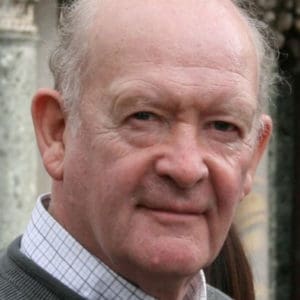Editor’s note: Today, David Torkington continues his series on prayer. To read part 25, click here. To start with part 1, we invite you to click here.
Immediately after Jesus was baptized in the Jordan by St John the Baptist, “The Spirit drove him out into the desert where he remained for forty days where he was tempted by Satan” (Mark 1:13). St Matthew describes these temptations and the other evangelists show how his tussles with the devil continued in one way or another throughout his public ministry. St John uses the symbolism of light and darkness to describe this struggle that reaches its conclusion on the Cross. He writes, “After Judas had taken the bread, Satan entered into him” (John 13:27). “He went out and it was night.”
Christ’s victory over Satan and the powers of evil took place on the Cross when the powers of evil were pitted against him but he never faltered, and the moment he died was the moment when he was glorified. What he received at that moment enabled him to be united with his Father where he was able to contemplate his infinite glory. He returned to the place he had occupied from all eternity, but on his return, he took with him his human nature that had been victorious over the powers of evil. This, his human nature was now not only able to contemplate the Father, but also to transmit the love he received and experienced in return to other human beings.
Confronting the Power of Evil
This theme that begins in the scriptures with Christ being led into the desert continues through the first centuries and is to be found in its clearest manifestation in the teachings and the sayings of the Desert Fathers. In his remarkable life of St Antony, St Athanasius makes it clear that Antony and his followers went there precisely to confront and defeat Satan, as Christ had done at the outset of his public ministry. As the great spiritual theologian Père Louis Bouyer puts it in his History of Christian Spirituality:
“In primitive monasticism, the retreat to the desert is in no way a simple desire for tranquillity, for leisure or for extended contemplation in the sense this is understood in Greek Philosophy. If a monk buried himself in the desert it was with the desire of fighting the devil in what was considered his usual dwelling place”.
The monk was a person possessed by a holy impatience to seek perfection. That is why he goes with all speed to the place where he can expect to find, face and vanquish the spirit of evil so that the spirit of love can possess him and rule where evil ruled before. It would be naive to believe that this battle was primarily a physical battle fought in the wilderness. It was the wilderness that created the utter solitude that forced the monk to face the demons within.
The Spiritual Desert Deep Down Within
However, this spiritual combat is for all who are baptized into Christ who have responsibilities that prevent them following people like Antony into solitude. They too are called to union with Christ and they too are called to take up arms against the power of evil so that love may rule where evil once ruled before.
Once a spiritual novice passes through the first fervor that all serious searchers experience in any age, they find themselves in a spiritual desert that is located deep down within them. Here, like the monk, they have to face the demons that dwell there. No one is free of the seven deadly sins that the demons use to keep their victims earthbound.
The very idea that a person ruled by their demons from within can be united with the Risen Lord is totally unthinkable. It is for this reason that, once first enthusiasm has evaporated we have to undergo the purification that entails first seeing the demons that separate us from Christ, and then, with God’s help vanquish them. The ensuing purification is mentioned everywhere in the writings of the early Fathers of the Church, but it is to be found in far greater detail later in the writings of St John of the Cross. He explicitly states that after first fervor, that in his day took place most commonly in a person’s personal prayer life, a novice would have to face the sinfulness and the selfishness within. In the first chapters of The Dark Night of the Soul, he enumerates all the faults and failings that so far remained unseen, for the beginner was too occupied with the intoxicating vapors of sweetness and light to notice the demons within that have to be rooted out before being rooted into the life of Christ.
St. Antony’s Vision of Christ
This can be testing at times almost beyond endurance. When at the end of a particularly painful period in his purification St Antony had a vision of Christ, he complained to him with the words, “Where were you?” Christ answered, “Anthony, I was present at your side. But I waited, observing your fight. And since you have resisted so bravely, I will now always be at your side.” The mystic way is a spiritual combat in which the forces of evil within have to be defeated. This purification is not always painful for there are moments of joy too when after periods of purification there are moments of spiritual delight when the one who has been actively purifying them makes his presence felt. It is then that his love can suddenly transport them to high states of spiritual experience, as St. Teresa of Avila describes in her masterwork, Interior Castle. In addition to St. Athanasius’ famous book on St Antony, we come to know more of the spirituality that Antony taught his monks through the writings of Evagrius Ponticus (AD 345-399), a learned monk who synthesized this spirituality for posterity.
Evagrius Ponticus – Accidie and Apatheia.
Speaking of the purification which Antony and his fellow monks had to undergo on their way to union with Christ, Evagrius, called the aridity in which they found themselves after first fervor, Accidie and the experience of presence that follows it, Apatheia. St John of the Cross details the characteristics of Accidie in The Dark Night of the Soul whilst St Teresa of Avila does likewise for Apatheia in her masterwork Interior Castle. Through a sort of spiritual hide-and-seek, believers are purified by the alternating experiences of absence and presence, light and darkness, convincing them that it is God and not they who are in control of their spiritual destiny. At times they are cast into the depth of all but despair, at other times they are raised to the heights of ecstatic joy and to almost every state between the two before purification is complete. Then, what the early Fathers called Theosis or Divinisation, and their spiritual descendants called ‘The Transforming Union’ or ‘The Spiritual Marriage’, takes place, enveloping the whole person, body, and spirit as they are possessed ever more fully by the same Spirit who possessed Christ and raised him from the dead. I hope this makes it clear that the mystic way, as experienced by the first Christians, was no different from the mystic way as explained by St. John of the Cross and St. Teresa of Avila, nor for that matter is it any different for those traveling along the mystic way today.
The Primeval Desire for Love
It is in this purification that, ‘the primeval desire for the fullness of love’ which can only be found in God, is gradually purified to enable this desire to be fulfilled. However, no matter how perfectly it is honed for this purpose, human love alone can never rise to enter into God. When the purification has been sufficiently completed, the Holy Spirit who has been actively involved in the whole process draws the person into Christ more deeply than ever before to be fitted into his contemplation of the Father. For it is only in, with and through him that it is possible to be united with God the Father. That is why Jesus once said, speaking of John the Baptist, that no man born of a woman was greater than he, but even the least in the Kingdom of God is greater than him. Why? Because it was only after the outpouring of the Holy Spirit that took place after the death of John the Baptist that the new people of God could be drawn up and into Christ’s mystical body so that union with God could take place through him. It was only in and with him that everyone could draw close to and enter into God their common Father and their final destiny.
Sadly at the end of the ‘Age of the Martyrs’ two pernicious heresies would attack the divinity of Christ and consequently, his love, the Holy Spirit, and so have disastrous consequences on the God-given spirituality that Jesus introduced to our first Christian forebears for many centuries to come. I will deal with them in due course.
Photo by Michal Prucha on Unsplash




